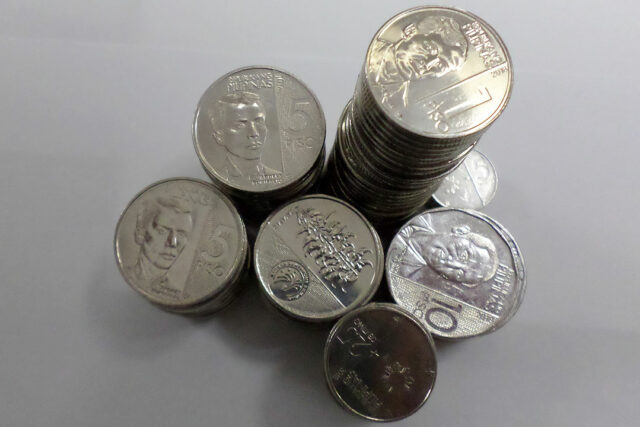Peso drops further on oil’s rise, slower remittance growth

THE PESO weakened further against the greenback on Thursday after the latest correction in global oil prices and slower growth in cash remittances in July.
The local unit closed at P57.16 per dollar on Thursday, shedding five centavos from its P57.11 finish the day prior, data from the Bankers Association of the Philippines showed.
This is just two centavos stronger than its all-time low of P57.18 recorded on Sept. 8.
The peso opened the session at P57.10 per dollar. Its intraday best was at P56.975, while its weakest showing was at P57.175 against the greenback.
Dollars traded declined to $909.8 million on Thursday from the $989.9 million logged on Wednesday.
The local unit’s depreciation came after an upward correction in global oil prices, according to Rizal Commercial Banking Corp. Chief Economist Michael L. Ricafort.
Oil prices edged up by 1% on Wednesday. Brent crude futures rose 93 cents or 1% to $94.10 a barrel, while West Texas Intermediate crude ended $1.17 or 1.3% higher at $88.48.
“The peso was also weaker after the modest growth in OFW remittances data, partly due to elevated inflation and higher interest rates in the United States and in other countries that weighed on OFW employment,” Mr. Ricafort said.
Data released by the Bangko Sentral ng Pilipinas (BSP) on Thursday showed cash remittances sent through banks stood at $2.92 billion in July, 2.3% up from $2.85 billion in the same month in 2021.
This amount is the biggest monthly inflow since the $2.99 billion logged in December 2021. However, the growth in cash remittances in July was the slowest in two months or since the 1.8% seen in May and also eased from the 4.4% in June.
For the first seven months of 2022, cash remittances rose by 2.8% to $18.26 billion from $17.77 billion in the comparable year-ago period. The BSP expects remittances to grow by 4% this year.
The peso also continued to weaken amid continued current and financial account outflows, ING Bank N.V. Manila Senior Economist Nicholas Antonio T. Mapa said in a Viber message.
“The Philippines is now running a deep current account deficit, due largely to the stark widening of the trade deficit,” Mr. Mapa said.
“Meanwhile, investors remain wary of the now very hawkish Fed, with interest rate differential collapsing as the Fed hikes rates aggressively. Peso to remain on the back foot until either one or both of these dynamics change,” he added.
The US Federal Reserve is widely expected to fire off another 75-basis-point (bp) hike at their Sept. 20-21 meeting to curb inflation, which would mark its third straight increase of that magnitude. The Fed has hiked rates by a cumulative 225 bps since March.
The BSP will hold its own review on Sept. 22. The Monetary Board has raised benchmark interest rates by 175 bps so far since May.
For Friday, Mr. Ricafort expects the peso to move from P57.05 to P57.25 per dollar. — Keisha B. Ta-asan



